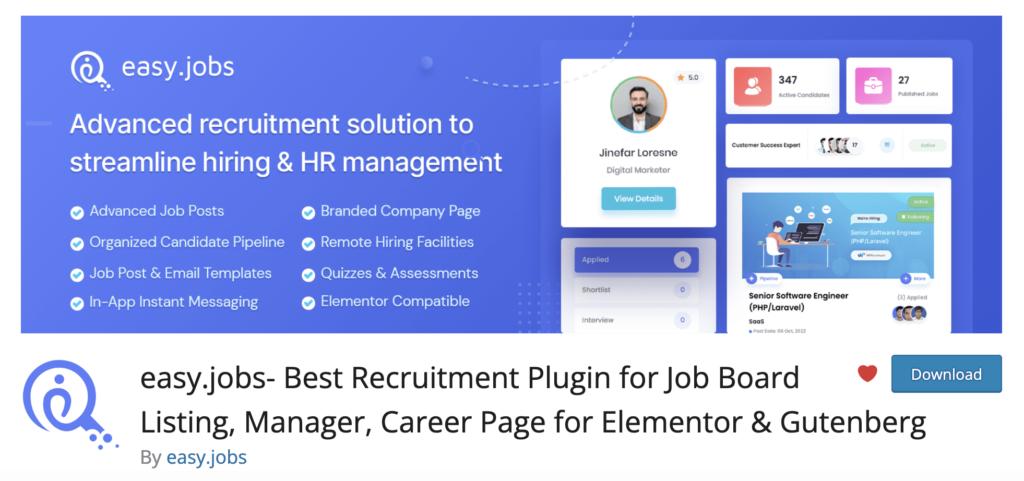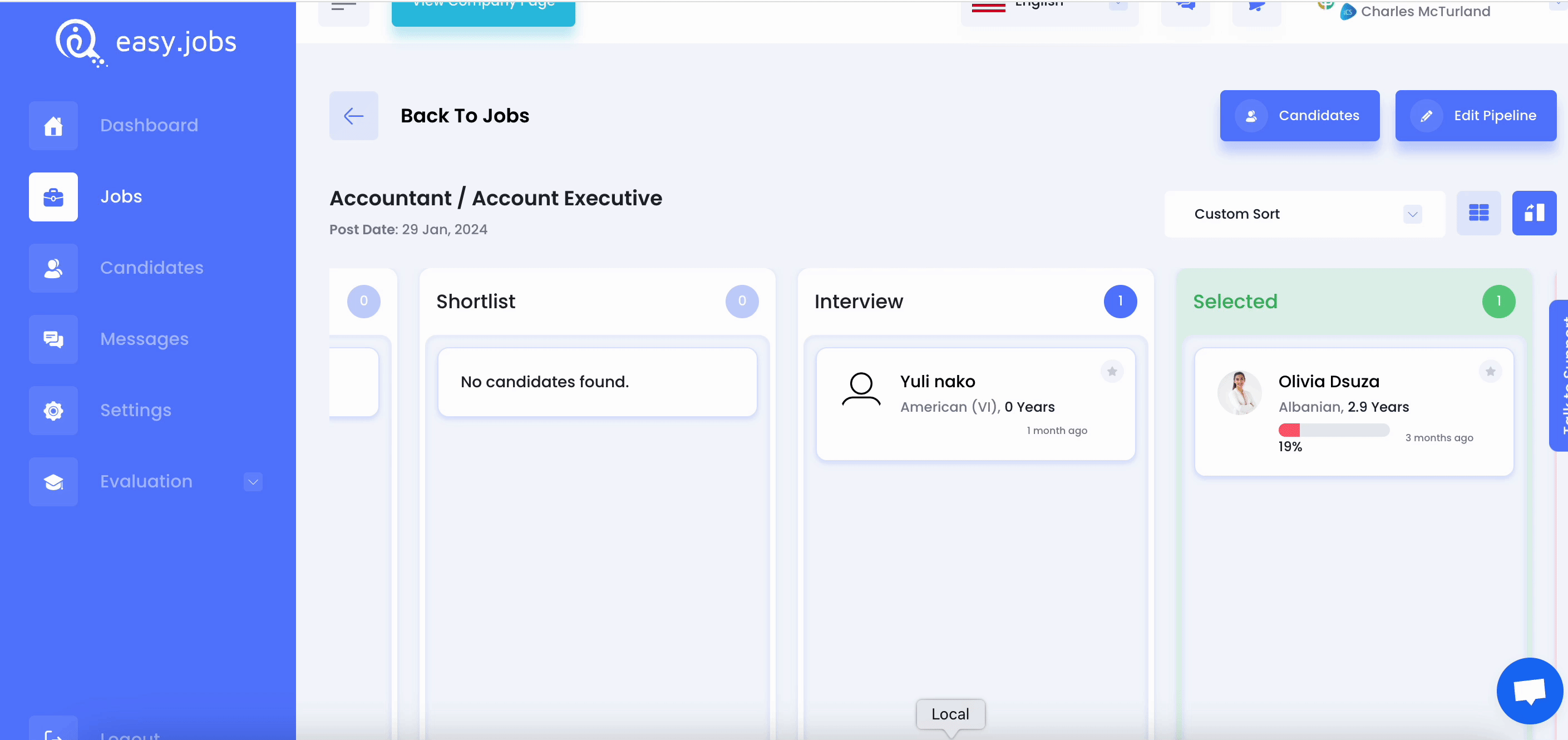Are you curious about the best way to gauge the effectiveness of your company’s hiring process? The most effective way to understand whether your hiring strategies are working is by tracking or measuring important recruiting metrics.
But with a long list of relevant metrics and indicators, which ones should you implement and track for your team? No need to wonder anymore because we have the top most important recruiting metrics to track and improve impact listed in our complete guide below. So without further ado, let’s dive right in and optimize the way you hire.

What Are Recruiting Metrics And How To Measure Them?
Metrics used to track and analyze different segments of the hiring process are called recruiting metrics, sometimes also referred to as talent acquisition or recruitment metrics. These indicators assist HR managers and recruiters in assessing the success rate and efficiency of their hiring initiatives, pinpointing areas needing development, and making data-driven choices that streamline the hiring procedure.
While the measurements differ based on the objectives and priorities of an organization, all organizations should measure some standard metrics related to recruitment. Companies may improve the overall efficacy of their hiring process by tracking and evaluating certain recruiting indicators, which provide them with insights into their recruitment performance and allow them to make data-driven decisions.
Here are some of the most popular recruiting metrics:
1. Time to fill
2. Time to hire
3. Source of hire
4. First-year attrition
5. Quality of hire
6. Hiring Manager satisfaction
7. Candidate job satisfaction
8. Applicants per opening
9. Selection ratio
10. Cost per hire
11. Candidate experience
12. Offer acceptance rate
13. Percentage (%) of open positions
14. Application completion rate
15. Recruitment funnel effectiveness
16. Sourcing channel effectiveness
17. Sourcing channel cost
18. Cost of getting to Optimum Productivity Level (OPL)
19. Time to productivity
20. Adverse impact
21. Recruiter performance metrics
Measuring recruiting metrics is easy if you can use the right products. Many organizations maintain spreadsheets to track important recruiting metrics. But it’s not automated and has to be maintained manually. So, by going for hiring management tools like easy.jobs, GreenHouse, Workable, etc., you can easily serve both purposes: have a streamlined hiring process and track important recruiting metrics seamlessly.

How To Track 5 Important Recruiting Metrics + Tools Suggestions
Depending on your organization’s structure, you can explore all important recruiting metrics and pick the most suitable ones for your organization. Here we have hand-picked 5 important recruiting metrics, and let’s check out how to track them.
1. Candidate Eligibility Score
When your organization opens a job posting, you will see lots of people applying. But how do you check out the eligible ones at a glance? You can measure these important recruiting metrics easily with Candidate eligibility scores.
If you are doing it manually, then you have to set up the key factor and analyze your provided job description vs what is written candidate’s resume. It is so time-consuming, which may decrease the score of one of the important recruiting metrics, Recruitment funnel effectiveness.
💡How To Track Important Recruiting Metrics: Candidate Eligibility Score?
To save time and effort, you can go for easy.jobs, an all-in-one hiring tool to track candidate eligibility scores. easy.jobs have compatibility with Open AI, which helps you generate all applied candidates’ eligibility scores. So, at a glance, you can check out which candidates are more suitable according to our open position description. Here is how candidates’ eligibility scores will appear in easy.jobs dashboard:

2. Offer Acceptance Rate
Another important recruiting metric to track is the offer acceptance rate. This metric helps you in many important decisions, such as how effective the interviewer team was, how qualityfully applied candidates were, etc.
The offer acceptance rate is the percentage of job offers that candidates who have received an offer to work for a company accept. This statistic is used by HR professionals to evaluate the efficacy of their recruitment and selection process and identify areas for improvement. A low acceptance rate could be a sign of problems with candidate fit, pay, or job offers. Thus, you may also incorporate this into your recruiting analytics.
💡 How To Track Recruiting Metrics: Offer Acceptance Rate
To track down this important recruiting metric, you will need the following data: the acceptance letter provided to candidates and the list of candidates who accept the offer. The equation for measuring the offer acceptance rate is:
OAR = (number of accepted offers/number of job offers made) X 100
It is noteworthy to mention that an acceptance rate of 80% is considered “good” for an offer. Naturally, this should be done using an average value from multiple previous hiring procedures.
If you are using easy.jobs, then you will get an advanced pipeline view; from there, you can send candidates’ profile cards to the ‘Selected’ column and automatically send an offer acceptance letter. Depending on the count of offers accepted, you can seamlessly track important recruiting metrics, such as offer acceptance rates.

3. Sourcing Channel Effectiveness
This important recruiting metric evaluates how well different sourcing channels, like job boards, social media, employee referrals, and career fairs — perform in drawing in eligible applicants. It is easier to distribute resources more wisely when one is aware of the highest-performing channels.
By examining the efficacy of sourcing channels, one may contrast those that generate candidates and hire with those that don’t. You can use this information to decide whether to invest less time and money in poorly performing channels.
💡 How To Track Recruiting Metrics: Sourcing Channel Effectiveness
When you are creating job posts with easy.jobs hiring solutions, you will get direct options to share them on versatile channels like social media and all. After that, you can check out the in-depth insights directly from easy.jobs analytics dashboard. From there, you can easily measure total visits, unique visitors, actions taken by candidates, etc. data in your defined time frame. Here is a glimpse of it:
4. Time To Fill (TTF)
The term “time to fill” refers to the duration of time between the approval of the job posting or circular and the candidate’s acceptance of the offer. In addition to the usual influences of supply and demand, this measure can also be affected by industry requirements and the speed at which a hiring team operates.
Time to fill is a crucial metric because it provides hiring managers and recruiters with a more accurate understanding of the average time it takes to fill available positions. A reduced time to fill (TTF) is a sign of an effective hiring process, which is necessary to lower the expense and effort related to open positions.
💡 How To Measure Time To Fill Recruiting Metric?
To find your company’s average time to fill, just divide the total number of days it took you, over a specific period (e.g., a year), to fill all open jobs by the entire number of roles. Here’s the equation:
TTF = TTF 1 + TTF 2 + TTF 3 / Total number of positions filled in that period
5. Cost Per Hire (CPH)
The average cost incurred to fill a single position is determined by the cost per hire. This covers the price of advertising, hiring agencies, onboarding, and other associated charges. Controlling CPH is essential to maximizing hiring budgets.
Their cost-per-hire calculation is quite easy to use:
Here,
Internal human, organizational, and capital costs associated with hiring comprise internal recruiting costs. Costs associated with hiring outside suppliers or individuals throughout the hiring process are referred to as external recruiting costs.
Improve Impact Of Hiring With Important Recruiting Metrics
Your recruitment performance will start to smoothly upscale as soon as you begin monitoring and evaluating key recruiting metrics. Because of this, all businesses must decide to monitor recruiting metrics and select an intuitive and user-friendly recruiting solution.
Have you found this blog tutorial helpful? Then don’t forget to share it with your other recruiting managers. Also, subscribe to our blog to get more tips and tricks about smart recruiting.






